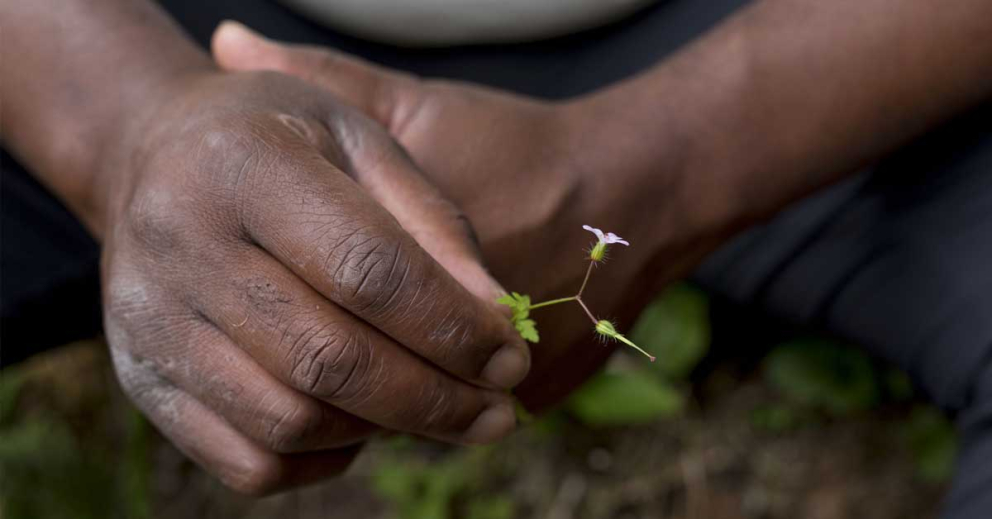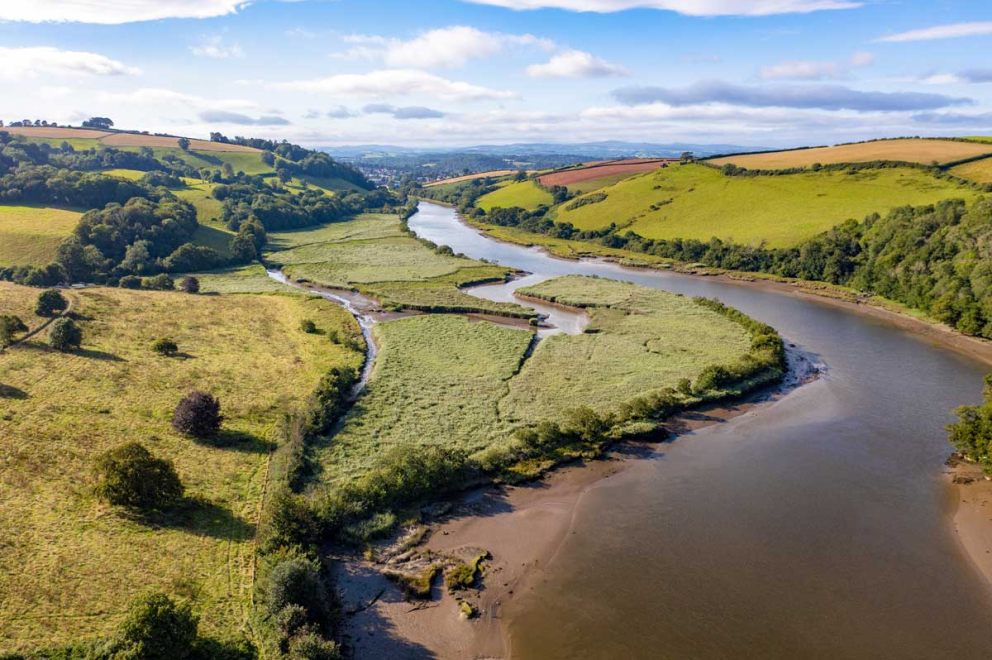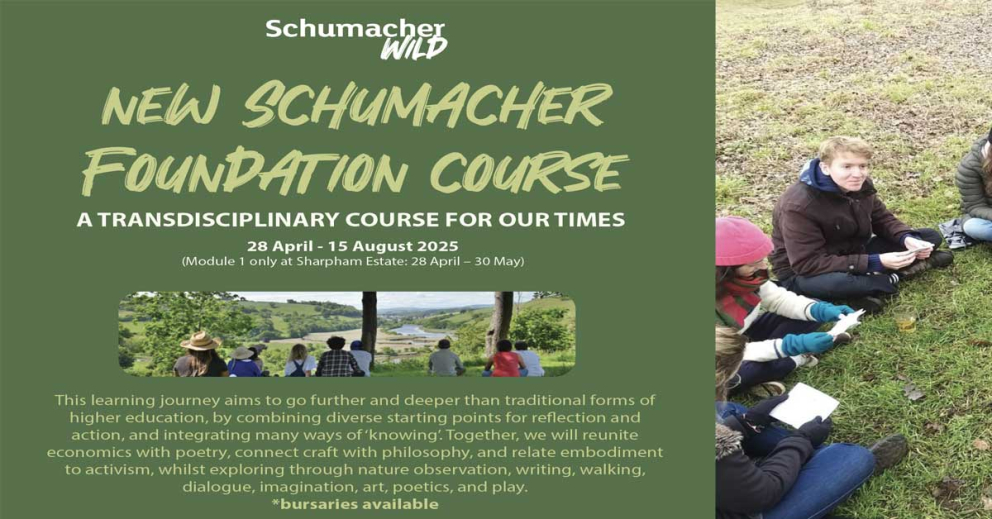Our rewilding project 1 year on - and World Rewilding Day
More birds and insects have been recorded just ONE year into a South Devon rewilding project backed by the National Lottery Heritage Fund.
As the United Nations’ World Rewilding Day arrives (Saturday 20 March 2021), The Sharpham Trust shares its good news about its work to restore nature.
Sharpham Wild for People is a £177,400 project to make more space for wildlife and allow it to return to fields on the Sharpham Estate, just outside Totnes. 50 acres of farmland close to the River Dart is going organic and being given back to nature.
And Nature IS returning, according to evidence gathered in the first year by the project’s leaders.
In just 12 months:
- Cirl buntings – a species endangered through industrialised farming methods - have been photographed on the Sharpham Estate for the first time (see picture above).
- Great Green Bush Cricket numbers are up and have been found in the middle of fields, something that we would never have seen in previous years where the habitat would not have been suitable. Great Green Bush Crickets are an important food source for birds
- Seed-eating birds such as linnets & goldfinches have been seen in greater numbers, benefiting from uncultivated fields with more plant seedheads
- Perching birds including the Stonechat have been measured in increased numbers, enjoying the longer vegetation where they perch to feed on insects
- Swallows, swifts and housemartins have been spotted in large numbers swooping over the fields richer in insect life since pesticide use has halted.
“In a world facing so many problems and challenges re-wilding offers hope that we can collectively take action which will reverse the decline in our natural world, restoring it for future generations, said Julian Carnell, Director of the Sharpham Trust (the charity which operates Sharpham Estate). “We are proud to be at the forefront of this movement here at Sharpham.”
The Sharpham Trust is working with nature conservation training organisation and Sharpham Estate tenant Ambios Ltd on the rewilding project.
Jack Skuse, Ambios director, said: “The fantastic thing about this year has been witnessing that increase in species abundance across the site. We’re very excited about that but we’re on a journey - we’ll be doing more work this year and making more observations.”
Wildlife watching & listening
Other wildlife highlights include increased sightings of hunting barn owls and kestrels preying on small mammals (such as voles & mice) which find shelter in the longer grasses of uncultivated fields.
Ambios got great footage of a barn owl close up in a camera trap set up on The Sharpham Estate, as well as film of another owl on its daytime hunt across the rewilding area.
Ambios teaches camera-trap skills to nature conservation trainees and wildlife photography fans (their next public online course is coming up in April).
Meanwhile, bats including the Lesser & the very rare Greater Horseshoes have been monitored at Sharpham, and organic farming techniques will assist their survival by supporting the insect life on which they feed.
Wild for People work in the coming year
The project continues in 2021 with some more visible works, said Jack.
“People may not have noticed much happening on the land in 2020 but you’ll start to see things changing in Year 2 of this project,” Jack said. “We have some fencing to do to prepare for grazers arriving, plus we’re renting some pigs to help disturb the compacted land, which helps wild plant seeds to set.
“We also need to continue the monitoring, so that we’re constantly measuring the effects that this project is having on the land,” he said.
Ambios will also be conducting more bat ‘listening’ through audio devices placed near roosts and bat-forage sites. “The problem is, we’ve had a bit of trouble with the increased Great Green Bush Crickets being recorded too!” Said Simon Roper, fellow Ambios director. “We’ve got to find a way to tell the difference between them easily…”
Historic parkland
A characteristic of this particular project is that it is taking place on an area of protected Historic Parkland, believed to have been laid out by famed Georgian landscaper Capability Brown, when Sharpham House & grounds were designed and built in the 18th century.
Documents from that time (including some sourced from The Sharpham Archive) support the project’s tree-planting efforts, enabling trees to be planted in positions marked on antique maps.
141 trees will be planted, probably in winter 2021, as part of Sharpham Wild for People. “We’re balancing both the historic landscape and the natural landscape. Part of the project is restoring that parkland but also making space for nature,” said Simon.
The people part of Wild for People
The public events planned for this project in 2020 had to be postponed because of the pandemic – but they are set to take place later this year instead.
Also, there will be opportunities for locals to become ‘citizen scientists’, helping to monitor the changes happening as the rewilding takes hold.
“Part of this project is about engaging Citizen Scientists so everybody can play a role in helping us record the wildlife across the Estate and that’s what’s going to be rolling out in the next year and beyond,” said Simon.
Sharpham and the wider wilding picture
Wild For People’s partners are linked into the local and national rewilding network, sharing information and best practice.
Said Simon: “This is part of a rewilding programme which feeds into a national picture. Increasingly, rewilding is becoming a phrase that’s being used and a technique that’s being used to make space for nature across the UK - and we on the Sharpham Estate are part of that”.










